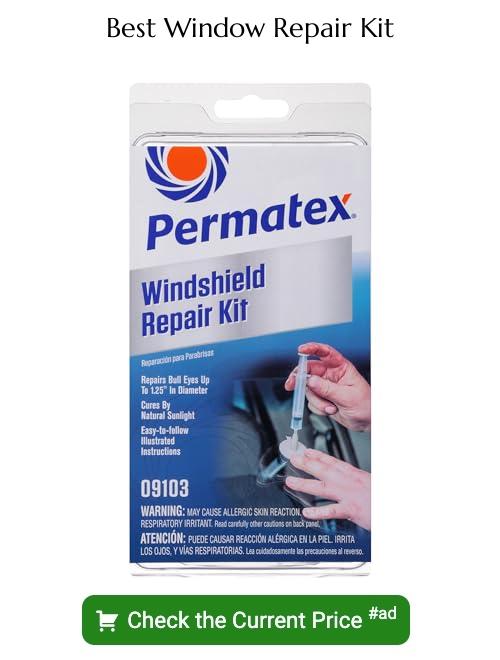Discover simple steps to temporarily repair a broken window, ensuring safety and security until a professional solution is available.
We’ve all been there – a stray baseball, a gust of wind, or an unfortunate accident leaves us with a broken window. It’s not only unsightly but also poses a safety hazard and can compromise the security of our homes.
While replacing the window is the best long-term solution, it may not always be possible immediately. That’s where temporary fixes come in handy! In this blog post, we’ll share some tips on how to temporarily fix a broken window until you can get it replaced.
So grab your toolkit and let’s get started!
Key takeaways:
- Assess the damage and determine if a temporary fix is possible.
- Take safety precautions by wearing gloves and protective eyewear.
- Clear the area of furniture and debris to prevent accidents.
- Remove loose glass and clean the area thoroughly.
- Use temporary window covering materials such as cardboard, plastic wrap, duct tape, or plexiglass.
Assess the Damage
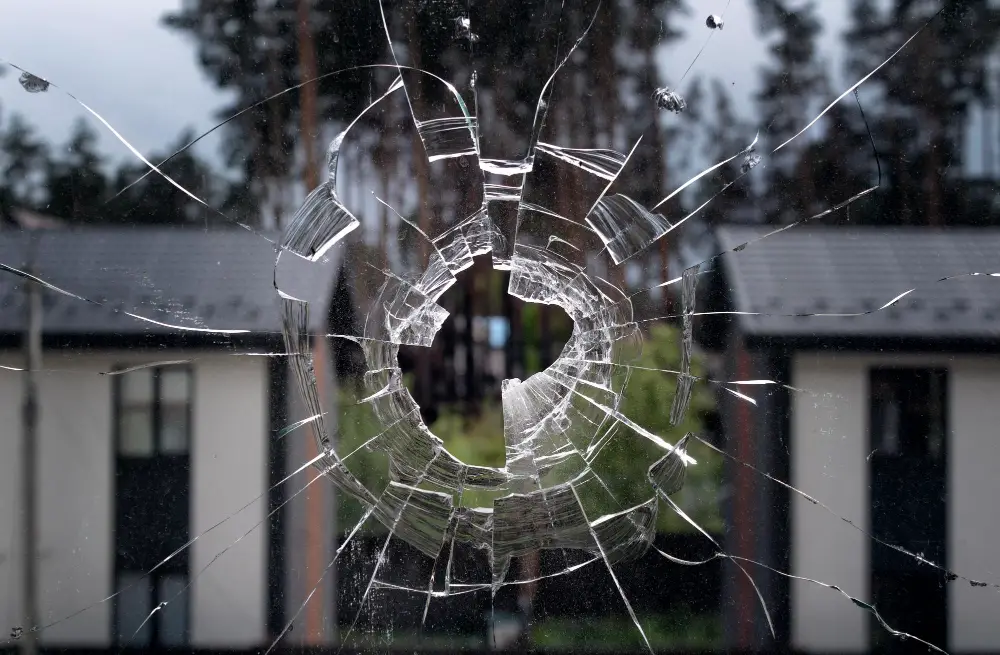
The first step in temporarily fixing a broken window is to assess the damage. This will help you determine the extent of the problem and what materials you’ll need for a temporary fix.
Start by examining the window frame, checking for any cracks or damage that may have occurred during impact. Next, inspect the glass itself and note any chips or breaks.
If there are only minor cracks on your window pane, it’s possible to repair them with an epoxy kit available at most hardware stores. However, if there are large holes or shattered glass pieces missing from your windowpane, then it’s best to replace it entirely.
Safety Precautions
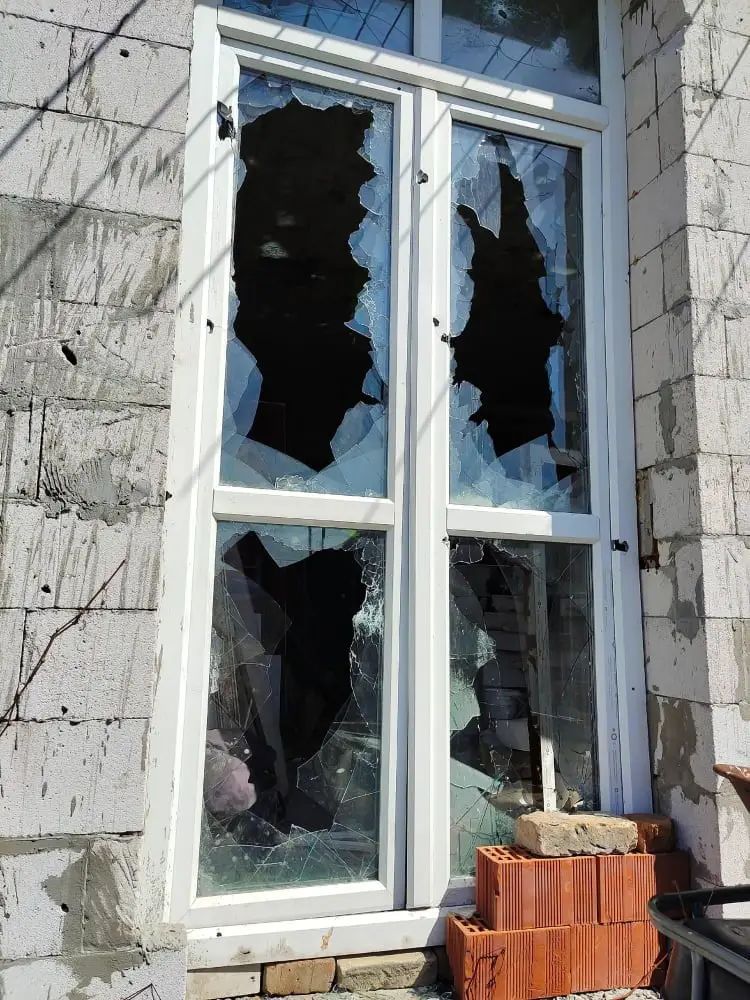
Broken glass can be sharp and dangerous, so make sure to wear gloves and protective eyewear while handling it. Also, keep children and pets away from the area until you’ve completed the temporary fix.
If there are any large shards of glass still in place, use a broom or dustpan to carefully remove them. Be cautious not to step on any small pieces that may have fallen onto the floor.
Once all loose glass has been removed from around your window frame or sill area (if applicable), clean up thoroughly with a vacuum cleaner or damp cloth before proceeding with your temporary repair solution.
Clear the Area

This step is crucial as it helps prevent further accidents or injuries from sharp glass pieces lying around.
Start by removing any furniture, curtains, blinds or other items that are near or in front of the damaged window. If there are any shards of glass on your floor, use a broom and dustpan to sweep them up carefully.
Be sure to wear gloves while handling broken glass pieces.
If you have pets or children at home, keep them away from this area until you have completed all temporary repairs. It’s also important not to walk barefooted in this space until all debris has been cleared out completely.
Remove Loose Glass

This step is crucial as it prevents further breakage and injury. Use gloves to protect your hands from sharp edges, then carefully remove any large pieces of broken glass that are still attached to the frame.
Next, use a putty knife or scraper tool to gently scrape away any remaining shards of glass or adhesive residue around the edges of the window pane. Be sure not to apply too much pressure as this can cause more damage.
Once you’ve removed all loose debris, clean up thoroughly by vacuuming or sweeping up small fragments and wiping down surfaces with a damp cloth. Proper disposal of broken glass is essential for safety reasons – place all shards in a sturdy container such as a cardboard box before disposing them in your trash bin.
Removing loose glass may seem like an easy task but requires caution and attention-to-detail for safe execution.
Proper Disposal of Broken Glass
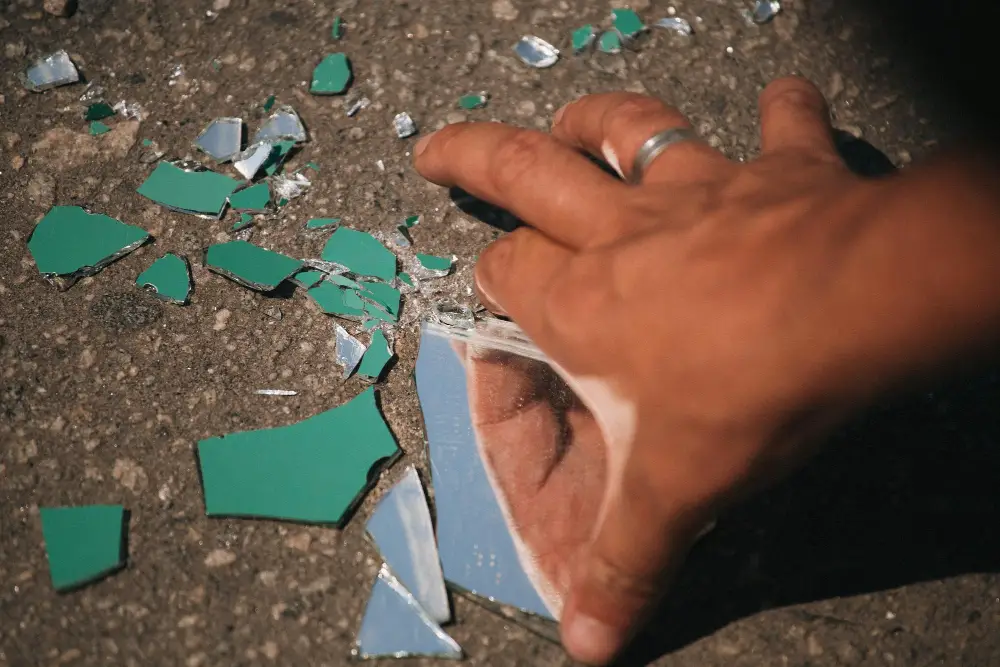
Never throw away broken glass in your regular trash bin as it can cause injuries to sanitation workers and others who come into contact with the waste. Instead, place all shards and fragments in a sturdy cardboard box or wrap them securely in newspaper before disposing of them.
Alternatively, you can take the broken pieces to a recycling center that accepts glass materials for proper disposal. Some cities also offer curbside pickup services for hazardous waste like shattered windows.
Remember always to wear gloves when handling sharp objects like broken glass and keep children and pets away from the area until everything is cleaned up properly.
Temporary Window Covering Materials
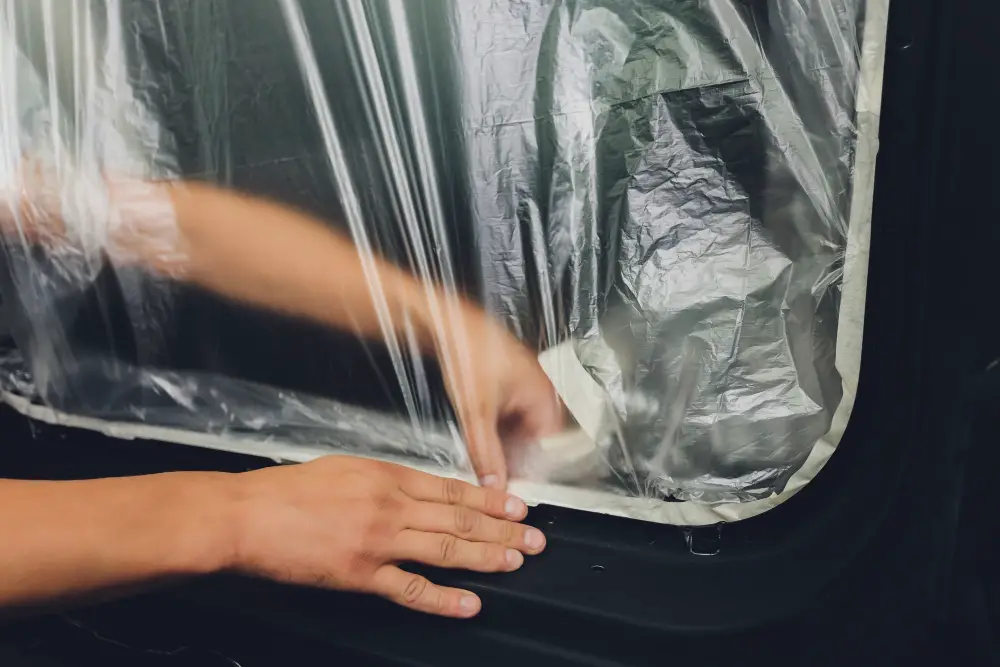
The most common ones include cardboard, plastic wrap, duct tape or masking tape and plexiglass or acrylic sheet.
Cardboard is an excellent option if you need a quick fix for your broken window. It’s readily available in most homes and can be cut to size using scissors or a utility knife.
Simply measure the dimensions of the damaged area and cut out a piece of cardboard that fits snugly into the frame.
Plastic wrap is another temporary solution that works well for small cracks in windows. This material is easy to apply by stretching it over the affected area and securing it with tape around all edges.
Duct tape or masking tape can also be used as temporary fixes for broken windows but should only be used on small cracks since they don’t provide adequate insulation against weather elements like rainwater seepage through gaps between panes.
Plexiglass sheets are more durable than other options mentioned above but require some expertise when cutting them down to size without cracking them during installation.
Apply Duct Tape or Masking Tape
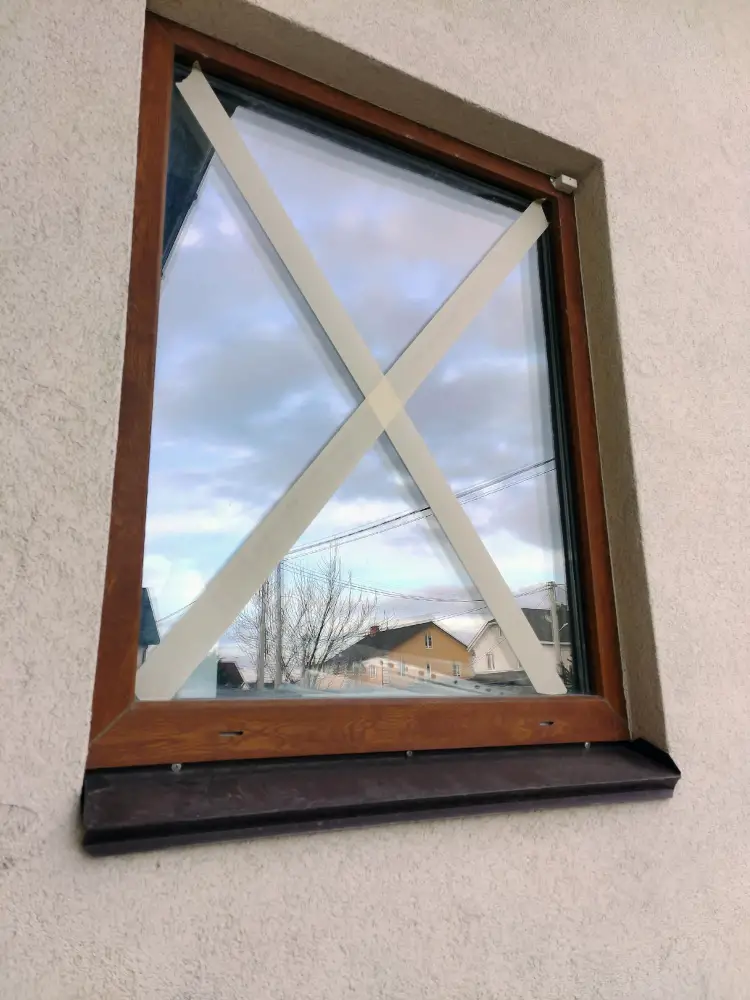
This method works best for small cracks or chips in the glass, as it won’t hold larger pieces together.
To apply duct tape, start by cleaning the area around the crack with a cloth and some rubbing alcohol. Then, cut a piece of duct tape that’s slightly longer than the crack itself and press it firmly onto both sides of the glass.
If you’re using masking tape instead, follow similar steps but make sure to overlap several layers over each other until you’ve covered up all visible cracks.
While this method may not be aesthetically pleasing, it will help keep your home safe from further damage until you can get professional help.
Cut Cardboard to Size
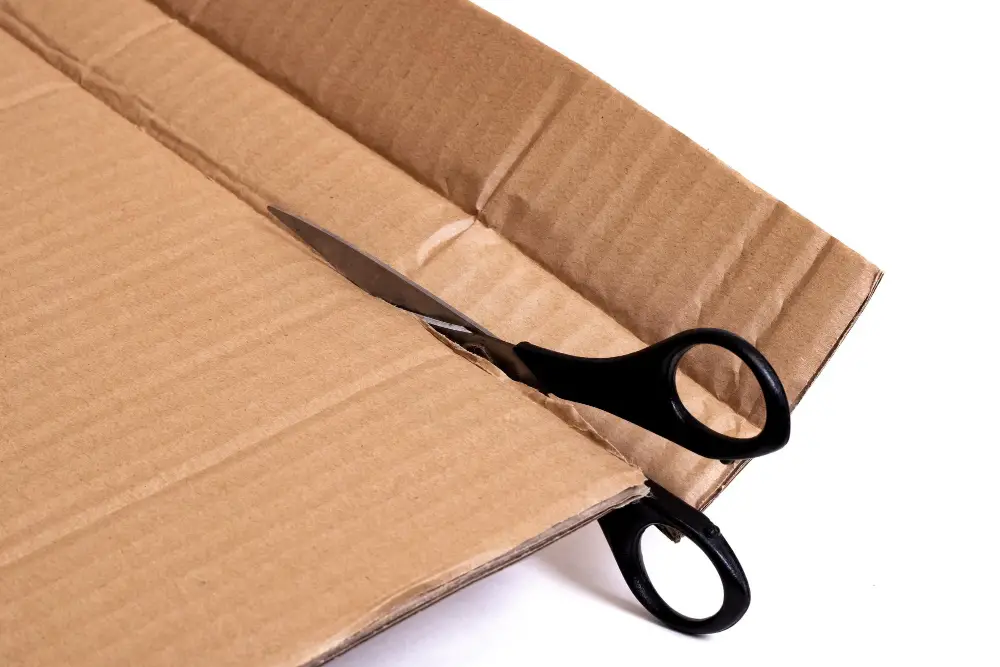
It’s readily available in most households and can be cut into the exact shape of your window frame. To get started, measure the dimensions of your window opening carefully using a measuring tape or ruler.
Next, find some sturdy cardboard that’s thick enough to provide insulation but thin enough so it can fit snugly inside the frame. You may need multiple pieces if you have larger windows.
Using scissors or a box cutter knife, cut out each piece according to the measurements taken earlier. Make sure they are precise as any gaps will allow drafts through which could affect temperature control in your home.
Once all pieces are ready, insert them into place by pressing them firmly against each side of the frame until they fit securely without any gaps around edges.
Plastic Wrap Method

It’s especially useful for small cracks or holes that don’t require extensive repairs. To use this method, you’ll need clear plastic wrap, scissors, and double-sided tape.
Start by cutting the plastic wrap into a size slightly larger than the damaged area of your window. Then apply double-sided tape around the edges of the broken glass pane on both sides of your window frame.
Next, carefully place the cut piece of plastic over one side of your damaged glass pane so that it covers all areas without any wrinkles or bubbles in between. Press down firmly on each edge to ensure it sticks well with adhesive tapes.
Repeat this process for another side as well if necessary until you have covered all affected areas completely with clear wrapping material from both sides.
Plexiglass or Acrylic Sheet

These materials are shatter-resistant and can withstand harsh weather conditions, making them ideal for outdoor windows.
To use this method, measure the size of your broken windowpane accurately. Then cut the plexiglass or acrylic sheet to fit that measurement with a saw blade designed specifically for cutting plastic sheets.
Once you have your piece ready, secure it in place by drilling holes into the frame around the broken glass pane and attaching it with screws. Be sure to use washers on both sides of each screw head to prevent cracking.
While this method may require some extra effort compared to other temporary fixes like duct tape or cardboard patches, it provides an excellent solution until you can get your window replaced professionally.
Weatherproofing Sealants
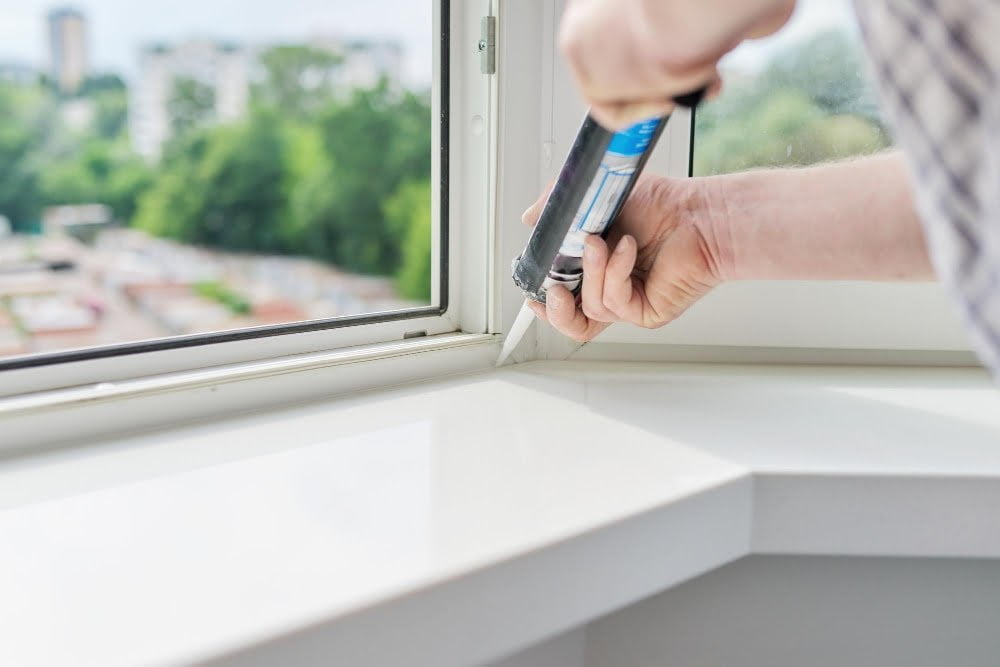
These sealants can be applied to the edges of the glass to prevent air and water from entering your home. They come in various forms, including silicone, latex, and acrylic-based products.
To use weatherproofing sealant as a temporary fix for your broken window, start by cleaning the area around the damaged glass thoroughly. Then apply a generous amount of sealant along all four sides of the frame where it meets with any remaining pieces of glass.
Be sure to follow manufacturer instructions carefully when applying weatherproofing sealant as some may require specific drying times or application methods. It’s also important not to rely on this method long-term as it is only meant as a temporary solution until you can get professional help or replace your window entirely.
Utilize a Window Film
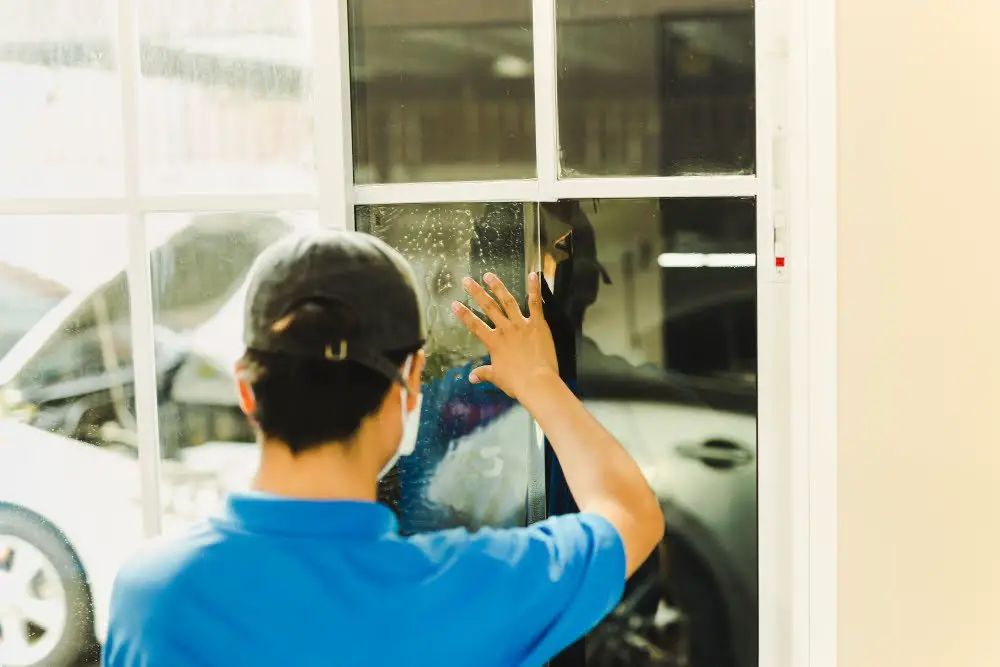
This option not only covers the broken area but also adds an extra layer of insulation and security. Window films come in various sizes, shapes, and designs that can match your home’s aesthetic.
To apply the film, clean the window thoroughly with soap and water or rubbing alcohol. Measure the size of your windowpane accurately before cutting out a piece of film slightly larger than needed to ensure full coverage.
Peel off one side of the protective backing from the adhesive side of your chosen film carefully. Align it with one edge on top while leaving some overlap on all sides before pressing it onto place firmly using a squeegee or credit card.
Smooth out any bubbles by pushing them towards edges until they disappear entirely then repeat this process for each section until you cover all damaged areas completely.
Window films are easy to install but may require professional assistance if you’re unsure about doing it yourself correctly.
Patching With Plywood
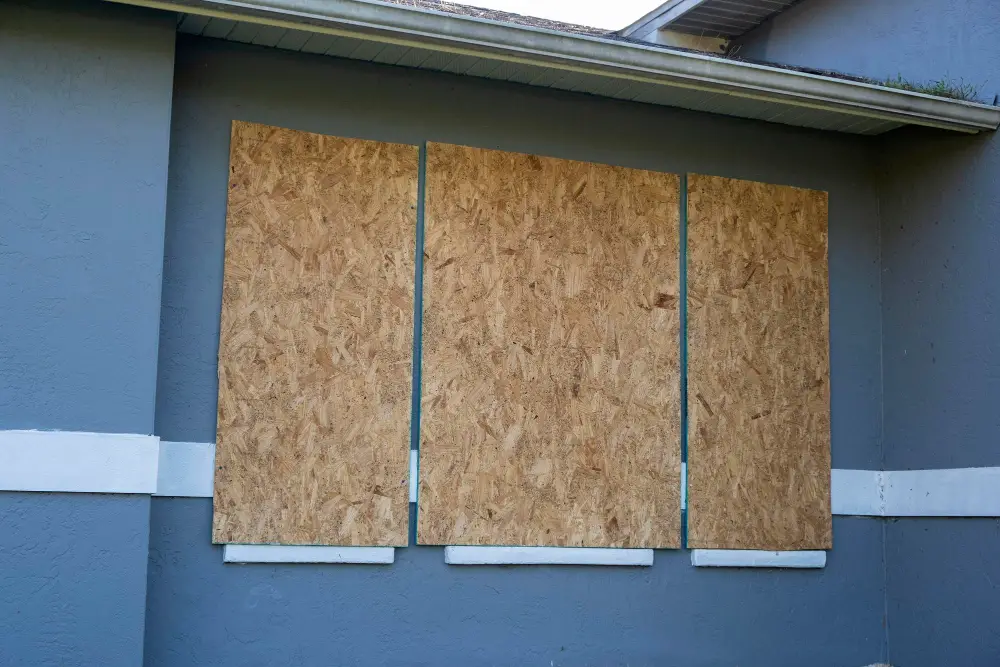
This method requires some woodworking skills and tools but can provide a sturdy and secure temporary fix.
To start, measure the size of the broken windowpane accurately. Cut a piece of plywood slightly larger than the measured dimensions using a saw or jigsaw.
Sand down any rough edges for safety purposes.
Next, place the cut-out plywood over your broken window frame from inside your home so that it covers all areas where glass was present before breaking. Securely attach it to your frame by drilling screws through each corner into its respective part on either side (inside/outside) until they are flush against one another without gaps between them – this will help prevent drafts from entering while keeping out unwanted pests like insects or rodents.
Secure the Edges
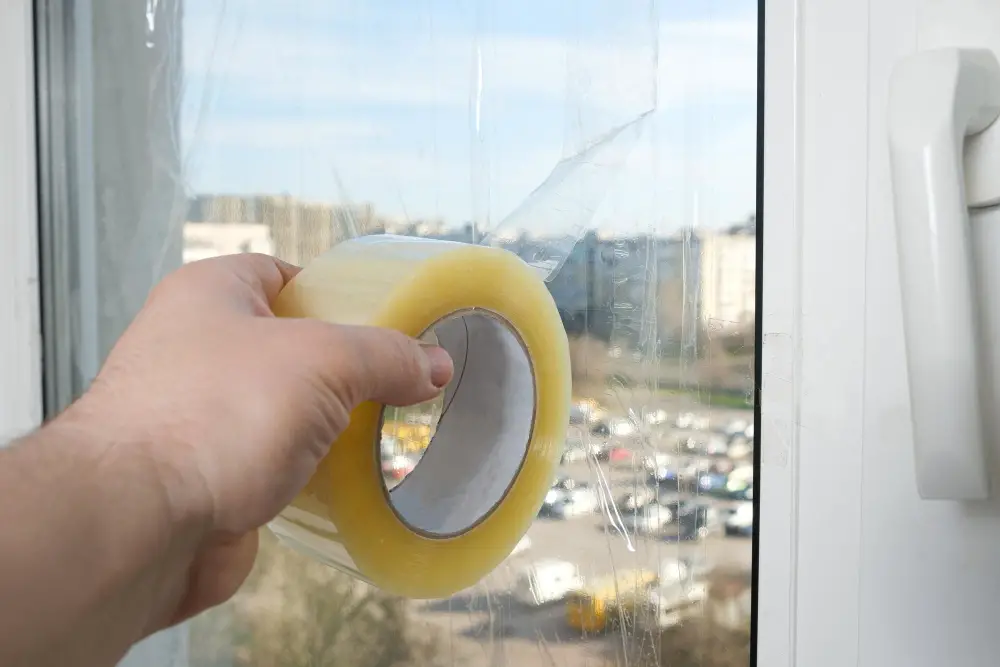
This will prevent any further damage or injury caused by loose glass shards. You can use clear packing tape or duct tape to seal off the edges of your temporary covering material.
Make sure that you apply enough pressure while taping so that there are no gaps between the tape and window frame. If there are any gaps, wind and rain can seep through them, causing more damage.
If you’re using cardboard as a temporary fix for your broken window, make sure to fold it over at least twice on all sides before securing it with tape. This will create an extra layer of protection against weather elements.
Remember that this is only a short-term solution until professional help arrives or until you replace your damaged windows entirely.
Keep the Area Insulated
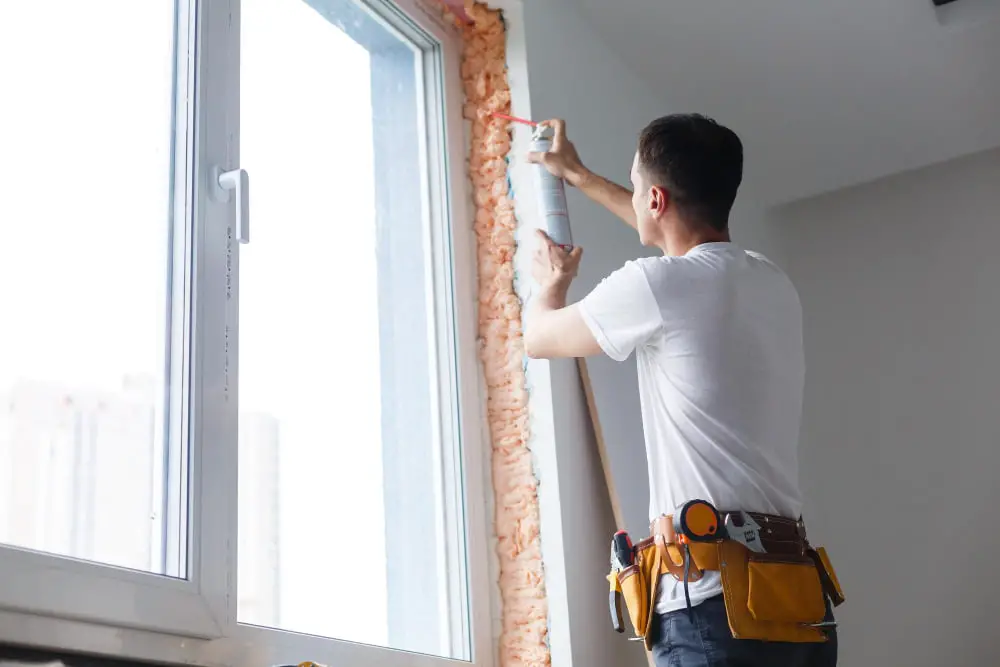
A broken window can cause drafts and air leaks that can lead to higher energy bills and discomfort in your home. To keep the area insulated, you can use weatherproofing sealants or insulating foam tape to fill any gaps between the temporary covering and the frame of your window.
Another option is to use shrink film insulation kits that are readily available at hardware stores. These kits come with plastic sheets that you attach over your windows using double-sided tape, then heat them with a hairdryer until they shrink tightly over the glass surface.
By keeping your temporary fix well-insulated, you’ll not only save on energy costs but also ensure comfort for yourself and loved ones while waiting for professional repairs or replacement options.
Remember always to monitor any temporary fixes closely as they may not be as durable as permanent solutions.
Monitor the Temporary Fix

While these fixes can provide a quick solution, they are not meant to be permanent and may deteriorate over time. Check the covering material for any signs of wear or damage and replace as necessary.
If you notice any gaps or openings around the edges of the covering material, reapply tape or sealant immediately.
It’s also essential to keep an eye on weather conditions that could affect your temporary fix. Heavy rain, strong winds, extreme temperatures – all these factors can impact how well your makeshift repair holds up.
Remember that while a temporary fix is useful in emergencies when professional help isn’t available right away; it should never be considered as a long-term solution for broken windows. Be sure always to prioritize safety by keeping children and pets away from damaged areas until repairs are made.
DIY Repair Kits
These kits are readily available at most hardware stores and come with everything you need to patch up the damage quickly. They typically include clear instructions on how to use them effectively.
However, it’s essential to note that not all repair kits are created equal. Some may work better than others depending on the type of damage and the size of your window pane.
Be sure always to read reviews before purchasing any product online or consult with an expert at your local hardware store for recommendations.
While DIY repair kits can be effective in some cases, they should only be used as temporary solutions until professional help arrives or permanent repairs can be made. Remember that safety is paramount when dealing with broken glass windows; take precautions such as wearing gloves and eye protection while handling sharp edges.
Contact a Professional for Repair
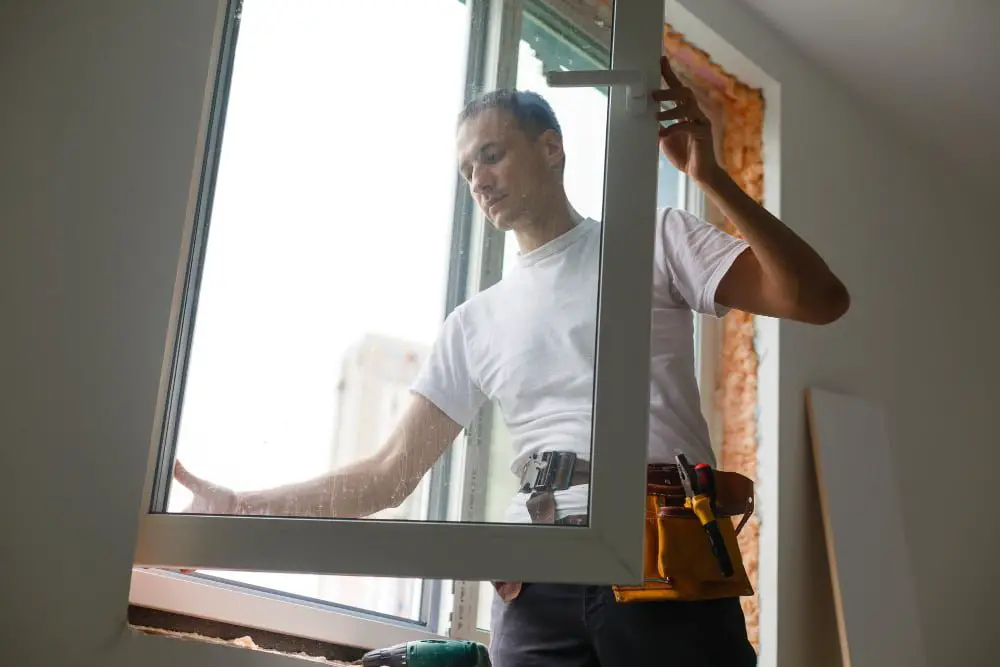
Therefore, it’s essential to contact a professional as soon as possible for window repair or replacement. A qualified technician will assess the extent of the damage and recommend an appropriate solution that meets your needs and budget.
While DIY solutions are tempting, they may not always provide a permanent fix or meet safety standards. Moreover, attempting repairs without proper training can result in injuries or cause more harm than good.
When choosing a professional service provider, do some research beforehand by checking their credentials, reviews from previous customers online and asking friends/family members for recommendations. It’s also important to get quotes from multiple providers before making your final decision.
Consider Window Replacement Options
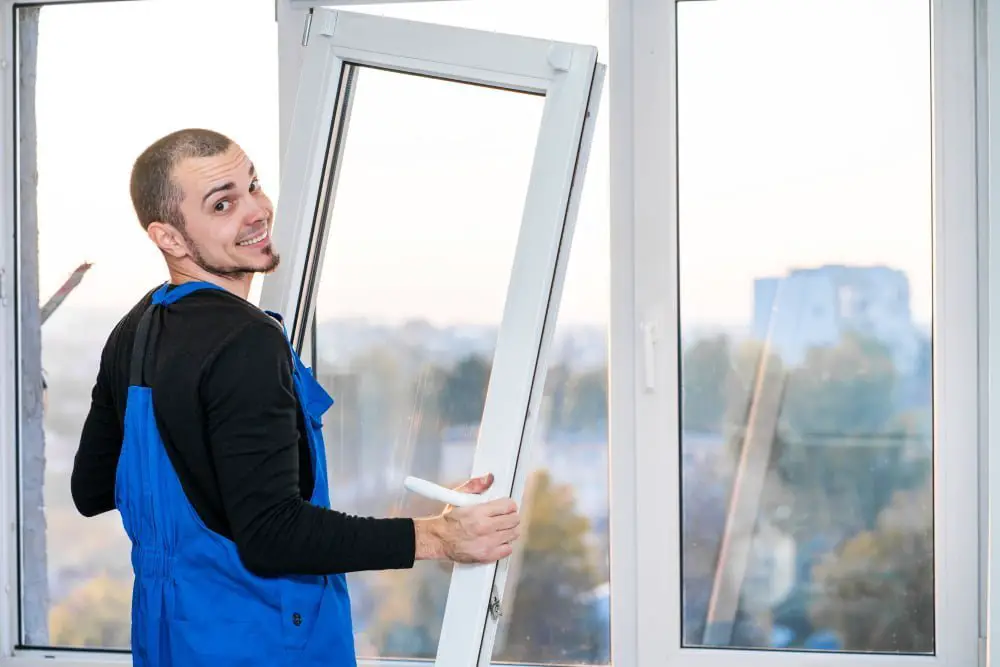
It’s essential to consider window replacement options as soon as possible for long-term safety and energy efficiency benefits.
When choosing new windows, there are several factors to consider, such as the type of glass and frame material that best suits your needs. Double-pane or triple-pane windows offer better insulation than single-pane ones and can help reduce energy costs in the long run.
Modern window frames made from materials like vinyl or fiberglass require less maintenance than traditional wood frames while still providing excellent durability.
Replacing old or damaged windows also enhances curb appeal and increases property value if you plan on selling your home in the future.
Window Safety Tips
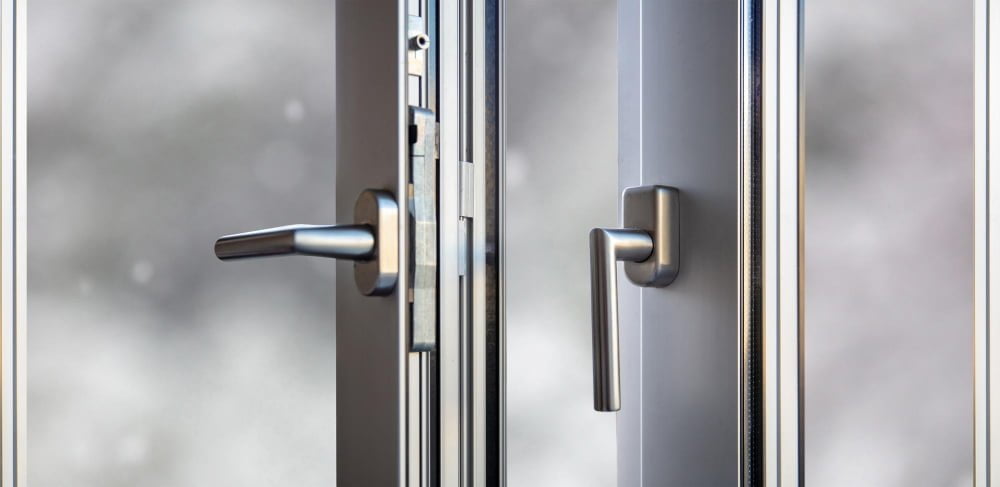
Here are some tips to keep in mind:
- Keep windows locked when not in use, especially on upper floors.
- Install window guards or stops that limit the opening of windows.
- Avoid placing furniture near windows that children could climb on.
- Teach children about the dangers of playing near open or broken windows.
- Regularly inspect your home’s windows for signs of wear and tear.
By following these simple tips, you can ensure that your family stays safe around all types of house windows – whether they’re brand new or temporarily fixed due to damage!
FAQ
What is the best temporary fix for a broken window?
The best temporary fix for a broken window is to secure the glass with heavy-duty tape, glass adhesive, clear nail polish, super glue, or plastic bracing.
What can I use in place of a broken window?
In place of a broken window, you can use tape for minor cracks, while a piece of plywood, heavy tarp, or plastic sheeting can be applied for larger damages or fully shattered windows.
How do you temporarily cover a broken car window?
To temporarily cover a broken car window, use a clear, high-density plastic trash bag as it allows some visibility while serving as a temporary cover until replacement.
How do you temporarily fix a broken window in the winter?
To temporarily fix a broken window in the winter, apply duct tape over any cracked glass, tape a plastic sheet or garbage bag to cover the window, and use multiple layers or bubble wrap for insulation.
What are some affordable and quick materials to secure a broken window temporarily?
Some affordable and quick materials to secure a broken window temporarily include plywood, heavy-duty plastic sheeting, or duct tape.
How can I prevent further damage while waiting for professional repair on a broken window?
To prevent further damage while waiting for professional repair on a broken window, cover the broken area with a sturdy material like plywood or heavy-duty plastic.
What safety precautions should be taken when handling the broken glass of a temporary window fix?
When handling broken glass from a temporary window fix, ensure you are wearing gloves, safety goggles, and use tools like a broom and dustpan to avoid direct contact with the sharp edges.
Related Stories
- Replacing Glass in Aluminum Window: Step-by-Step Tutorial for Easy Repair
- How to Board Up a Window Without Drilling: Easy, No-Drill Method Guide
- Aluminum Window Restoration: Step-by-Step Guide for Easy Repair
- 15 Ideas for Sliding Aluminum Window Repair
- Heavy Duty Plastic to Cover Windows: Effective and Affordable Solutions
Recap
